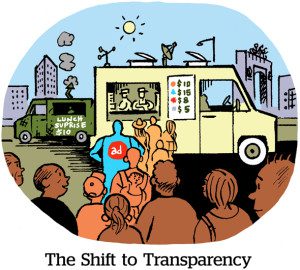For the second time in less than two months, Google/YouTube is the subject of a scathing report from Adalytics, this time detailing way-worse betrayals of advertiser trust than the TrueView/GVP fraud allegations.
Google is alleged to have violated not only its own YouTube Kids ad/data restrictions but also knowingly violated the data use restrictions of major advertisers across YouTube Kids channels.
It appears that campaigns targeted at adults – not kids – included personalized ads that ran on “Made for Kids” YouTube channels without the advertiser’s knowledge or parental consent.
This fraud seems to go well beyond another “you’re busted” moment for Google/YouTube, which has previously been caught falsely inflating audience, reach and clickthrough stats (aka gaming the ad market).
But what Adalytics appears to have found would cross a line that no advertiser should ever tolerate: Google imposing data collection violations on major YouTube advertisers that they secretly forced into Kids channels.
Advertisers should demand more of Google
Advertisers should jump on the opportunity to demand real transparency from Google.
It’s a nice chance for a do-over following the buy side’s muted reaction to Google’s alleged TrueView/GVP ad fraud five weeks ago. Agencies and advertisers varied between reluctance to respond, anonymous responses and quite a lot of rationalization.
Specifically, it is finally time for five overdue advertiser demands to be made:
- Complete transparency of the full lifecycle of all YouTube video ad units.
- Complete transparency on all calculations of YouTube video ad impressions.
- Complete transparency on the granular details of exact YT ad placements.
- Complete transparency into the composition of skippable ads vs. non-skippable ads in audience metrics, including reach calculations.
- A truly independent third party to provide these four levels of transparency on YouTube data on a permanent basis.
If met, these demands would signal the beginning of transparency that’s equal to what multiscreen TV provides – which is 100% third-party measurement, fully visible and granularly detailed ad execution, including precise confirmation of the exact location of every ad play.
It would also be a smart move to impose these same expectations on all of the industry players that have doled out merit badges to Google/YouTube, from brand safety accreditations to industry endorsements that use the words “verified, certified, safe and trusted.”
Worst fears, recognized
This second round of ad fraud (and worse) alleged by Adalytics on the part of Google/YouTube provides yet another definitive example of the problem with mega walled gardens:
- You only get to see what they let you see … no matter who you are.
- And the reason they get away with gaming the ad market is simple: Because they can. They get to play by a different set of rules.
Can US advertisers finally impose a single industry standard for transparency, the same standard that TV (now multiscreen TV) has upheld for decades?
Hopefully, the answer is yes. Otherwise, we’ll have to wait for another Adalytics report to see how much worse a non-transparent Google/YouTube could get for advertisers.
“On TV & Video” is a column exploring opportunities and challenges in advanced TV and video.
Sean Cunningham is president and CEO of the VAB.
Follow VAB and AdExchanger on LinkedIn.
For more articles featuring Sean Cunningham, click here.

















